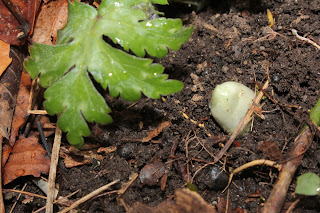Hard to believe we are already three months into the year! The Middlesex Biggish Year continues. A bout of warm weather brought in some migrants perhaps a bit earlier than normal, although I didn't capitalize too much off this (I'll get them later anyways). In total, I added 19 new species to my year list, which now stands at 112 species, or about 82% of the birds recorded so far this year in Middlesex County. I nabbed a couple tough species, I missed a couple of my targets this month: Lapland Longspur and Red-shouldered Hawk. Certainly still time to cross paths with them! The finches that graced us last fall have yet to make a northward return. This next month will prove critical. I was hoping to get some rare waterfowl this month, but it never happened. There is still time I guess.
The breakdown:
Code 1: 76 species (12 new)
Code 2: 21 species (4 new)
Code 3: 10 species (3 new)
Code 4: 3 species
Code 5: 2 species
Code 1s consisted of the typical spring migrants. Killdeer, Tundra Swans, and Turkey Vulture were all, as expected, checked off in the first week of March. Gadwall and Northern Shovelers were found in the first half of the month as well, with Blue-winged Teal coming in within the last week. I saw my first Eastern Phoebe the same day as my first Eastern Meadowlark. American Woodcocks showed up about halfway into the month. An early Common Loon was seen on Fanshawe Lake, with a Double-crested Cormorant appearing that day as well.
 |
| I guess I didn't take many pics this month, so here is a record shot of my FOY vulture |
Code 2s were some of the expected but harder to find migrants. These included Horned Grebe and Lesser Scaup on some of the larger bodies of water, as well as a Peregrine Falcon, which was chasing down some Northern Pintails. A singing Tufted Titmouse, still uncommon in Middlesex, was nice to get out of the way early.
Code 3s included two of the North Middlesex specialties: Ruffed Grouse and Common Raven. I also saw two different Snow Geese this month, a nice bird and not always a guarantee to be seen every year.
 |
| Snow Goose |
Well, that's the month of March for you! It has been fun so far, and I anticipate that it will continue to be that way. Onward to one of my favourite months!





















































